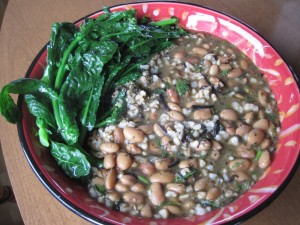 My dear friend Lisa Saslove R.D. and I, composed these tips for hormone balance together a few years ago. We find that the guidelines are timeless, and are very helpful to give people an idea of what a whole foods diet & lifestyle looks like…a lifestyle similar to the way our ancestors and many indigenous people all over the world today live.
My dear friend Lisa Saslove R.D. and I, composed these tips for hormone balance together a few years ago. We find that the guidelines are timeless, and are very helpful to give people an idea of what a whole foods diet & lifestyle looks like…a lifestyle similar to the way our ancestors and many indigenous people all over the world today live.
This Sunday, in my class called Whole Foods Cooking for The Optimal Woman, these hormone balance guidelines will be discussed in depth, along with ways to maximize calcium and iron assimilation with specific whole food combinations. We’ll also talk about strategies for gently getting off refined sugars, and for steadily eating lower glycemic to help prevent not only diabetes, but many modern diseases like cancer, high blood pressure, high cholesterol, heart disease, osteoporosis, and systemic inflammation, to name just a few. Also in this awesome class, we’ll review the benefits of periodic colon cleansing and guidelines for a colon cleansing diet, emotions as they relate to eating, and how to gently work toward the diet & lifestyle that’s best for your particular body type. Together, we’ll prepare and eat a D-E-L-I-C-I-O-U-S adzuki bean stew with seasonal veggies and wakame sea vegetable, and tasty, toasted, sesame-wakame sprinkle as a calcium supplement snack. YUM!
Okay, below are the basic guidelines for maintaining balanced hormones. Lists of specific foods, herbs, and other detailed information will be given in class on Sunday…
Basic Guidelines For Maintaining Balanced Hormones
1. Eat whole, organic foods to get peak nutritional content, and to avoid antibiotics and excess hormones in commercial meats and animal products. Get vitamins, minerals and trace minerals in the most absorbable, food-state form through dark leafy greens and sea vegetables such as nori, kombu, wakame and hijiki. Recipes using wakame, known as “the woman’s seaweed”, will be given to participants in Sunday’s class.
2. Drink filtered water that is kept in glass or stainless steel – NOT plastic, which leeches synthetic estrogens into the water. Also, re-mineralize your drinking water for efficient hydration…we’ll review the four ways to re-mineralize your drinking water in this Sunday’s class.
3. Address food allergies. Gluten and dairy sensitivity is common in menopausal women, which contributes to excess weight around the mid-section. Nature’s design is to put on weight pre-menopausally, in order to protect against stroke and osteoporosis, but obesity throws off the body’s hormone balance.
4. Stabilize blood sugar levels. On Sunday, we’ll talk about how to work your way off processed foods and foods with refined sugar. Avoid excess caffeine, alcohol, spicy food, and commercially raised meat, all of which aggravate the liver, which is involved in detoxification of excess hormones.
5. Stress hampers hormone balance. Get adequate sleep, relaxation time, and the types of foods and exercise that are right for your particular constitution (body type). In Sunday’s class, we’ll review body types according to macrobiotics, and the foods that help to balance each of them.
6. Eat foods that help to support liver detoxification. Detoxifying the liver every six months with a 3 – 5 day liver cleanse (diet & herbs) may be necessary if you have signs of a stagnant or excessive liver; fast pulse, red face or tongue, headaches, insomnia, high blood pressure, indigestion, distended abdomen or chest. We’ll review the rest of the liver-excess symptoms on Sunday, as well as specific foods which help to detoxify the liver.
7. Eat adequate plant-source calcium such as unhulled sesame seeds, cashew and Brazil nuts, dark leafy greens, cucumber, carob, and wakame sea vegetable. Cultured goat and sheep’s milk yogurt are easier to digest than cow’s milk diary products, and all dairy should ideally be eaten raw.
8. Get balance of omega 3 and omega 6 fatty acids (great sources will be listed on the hormone balance guidelines handout in Sunday’s class!).
9. Hormone balancing herbs work nicely for many women. On Sunday, we’ll discuss the differences between the yin-type woman, and the yang-type woman, and the herbs which are most balancing for each body type. Dong quai, wild yam, vitex (chaste berry), raspberry leaf, nettle, and pau d arco are hormone-balancing herbs which benefit different body types.
10. Minimize exposure to hormone disruptive chemicals in soft plastics, pesticides, cleansers, white paper, dyes, etc.
11. Have a saliva test done to determine your particular hormone imbalance. Blood testing isn’t as accurate.
12. FYI: The anti-aging hormone DHEA is not necessarily good for everyone. It’s easy to take too much and throw your hormone balance off even more. Have your physician determine if you need it after saliva testing.
